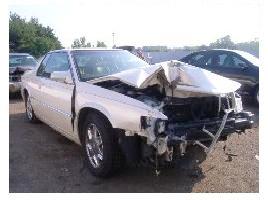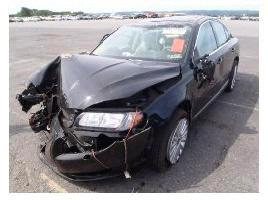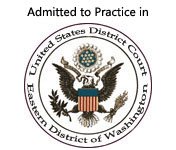Ask an Attorney a Question for FREE!
California Accident Law
A violation of the California accident law gives to the damaged party the rights to sue for negligence. All motorists in California should be informed of the accident laws of the state, how it applies to an injured party and the types of damages that are recoverable under state law.
Ask a Lawyer Now!
|
|
Under California State Laws, you must have minimum auto liability coverage of 15/30/5.
The enacted “Financial Responsibility Law” mandates the above minimum limit for insurance coverage. It also regulates the operation of motor vehicles in the state. By this California accident law, all motorists should be “financially responsible.”

This means that they should be able to present proof of insurance upon the request of law enforcers. They should also be able to provide coverage for damages they cause in a vehicular accident. Remember that an auto insurance policy extends its protection not only to vehicles owned by the policyholder but also to vehicles rented by the policyholder on a short-term basis.
A person who files a lawsuit against others for damages caused to him is known as the “plaintiff.” A plaintiff carries the burden of proof. That is, he has to show in a court of law that the other driver, the defendant (the person he is suing), was negligent.
He can establish his argument by showing in court that the defendant has violated the California Vehicle Code or the CVC.
He can also establish an argument by showing that the actions of the defendant fall below the standards of responsible driving. The plaintiff has to show the jury that the defendant’s lack of care in operating his vehicle led to the accident.
The plaintiff also has to show the jury that the damages and bodily injuries he incurred were in fact due to the irresponsible behavior of the defendant.
Listed below are some actions that the California Accident Law considers to be negligent behavior.
- Driving at speeds above the set speed limit – Road signs will help determine if the driver was speeding or not.
- Failing to Lookout - A driver must be able to take into account other persons, obstructions and other drivers on the road. He must also be in control of his vehicle.
- Failing to Give the Right of Way
- Failing to Fix Defects in the Vehicle – It is the responsibility of the vehicle owner to keep his auto in tiptop shape when operating it along the roadways of California.
- Irresponsible Behavior – When a motorist has willfully engaged in misconduct; when he has failed to do something or has done something even when he is aware that his actions will be the probable cause of injury to others.
- Failing to Apply and/or Maintain Brakes and Headlights

Remember that the ultimate decision of negligence and of whether or not the negligent behavior is the proximate cause of the injury is determined by a jury in a court of law and that the above behaviors are just representative of negligence that is commonly encountered.
| California Accident Law | |
| Jurisdiction | Pure Comparative Fault |
| Liability Insurance required? | Yes, driving without car insurance California Rule in effect. No pay No Play |
| Personal injury liability maximum for one person injured in an accident. | $15,000 |
| Bodily injury liability maximum for all injuries in one accident. | $30,000 |
| Property damage liability maximum for one accident. | $5,000 |
| PIP required? | No |
| No-fault state? | No |
| Uninsured motorist coverage required? | No |
| Bodily Injury Statue Of limitations | 3 years |
| Property Damage Statute of Limitation | 2 years |
| Small Claims Court Maximum Limit | 5000 or $4,000 if the word involves surety company or license contractor |
Back to all 50 states insurance laws and regulations.
|
For a Free Review of Your Case
Please Call (866) 878-2432 |


